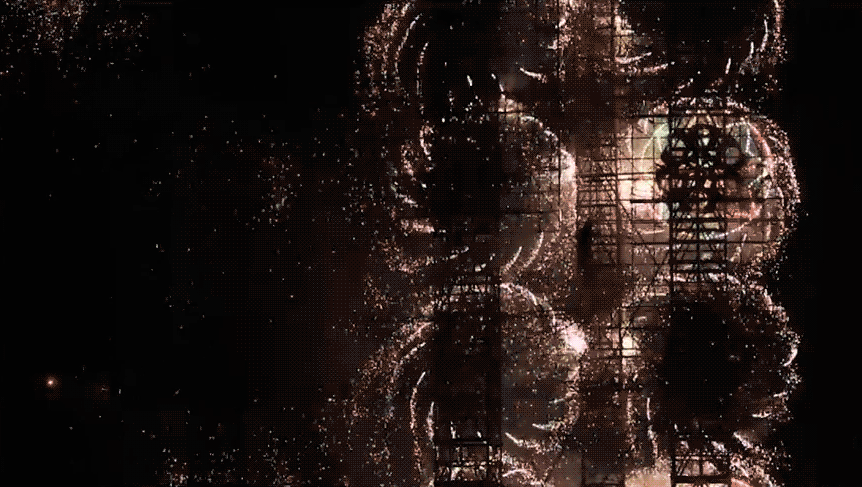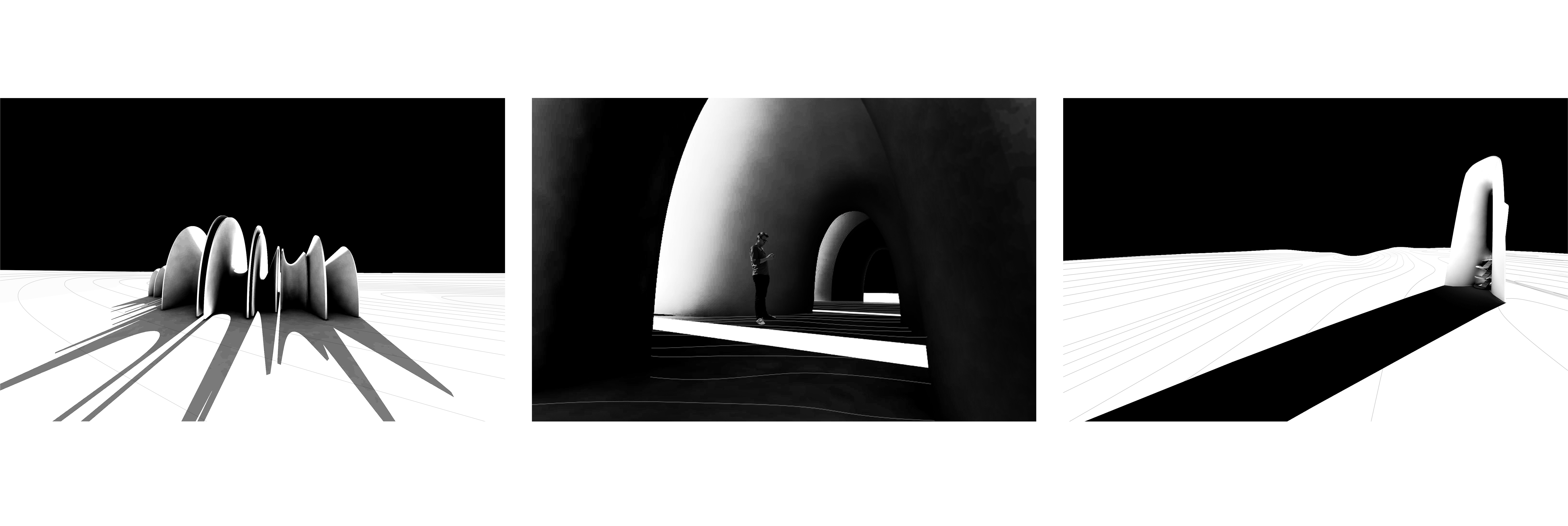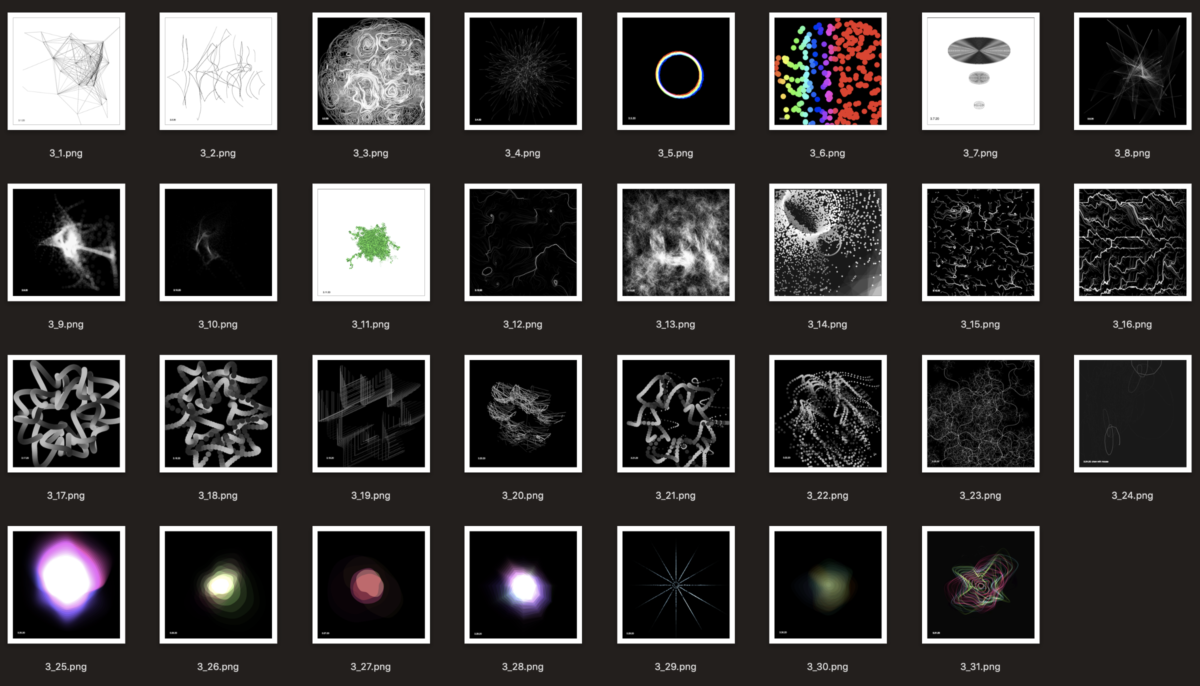Visit the online exhibition of work by the 2021 recipients of the Harold and Arlene Schnitzer Prize in the Visual Arts.
Po-Hao Chi, Chucho Ocampo, Carolyn Tam, and Nina Lutz
Artists have always found their subjects and techniques in the world where they reside. Whether working in marble, fresco, found objects, or holograms, artists recast the objects and ideas around them to create new meaning.
The winners of the 2021 Schnitzer Prize are also of their time and in their time. Po-Hao Chi ’21 ACT, who won the $5,000 first prize, harnesses the reach of the internet to create real-time sound performances. $3,000 second prize winner Chucho Ocampo ’21 ACT plans installations that probe the membrane between past and present, and knowledge and belief. Carolyn Tam, Architecture ’21, who won the $2,000 third prize, transforms bacteria into beguiling patterns and sunlight into performance art. And Nina Lutz, Computer Science ’19 and Media Arts and Sciences ’22, shares code-generated daily sketches on Twitter.
“The work of this remarkably gifted group of students embodies the wide range of visual arts practices taking place at the highest levels of excellence at MIT,” says Andrea Volpe, Director of the Council for the Arts at MIT (CAMIT.) “Their work demonstrates the compelling and powerful ways that technology itself can be used as an artistic material.”

A Body of Sound
It’s true that almost anything in our world can become art. First place winner Po-Hao Chi, a second-year student in the Program in Art, Culture, and Technology (ACT) shows that almost anything can become music. And that anyone—at least anyone with a mobile phone—can make that music. His works, often interactive, use popular technologies like web pages and mobile phones to transform spectators into participants—inviting them to become creators in spontaneous compositions and improvisations that take place both in person and online.
“I began my journey making instruments that I could play,” says the Taiwan-born Chi, who earned a Master of Music degree from Goldsmith College in London. “Now I use technology to transform those instruments into things other people can play.”
In Time Picker, Chi converted an abandoned paper factory in Taiwan into an oversized acoustic instrument and collaborative musical performance. Using their smartphones, in-person attendees could trigger sounds and light in the many containers and abandoned industrial objects the artist had strewn about the space. Participants could also access the installation on a dedicated web page.
Chi transposed geographic space into melody in Song of Distances. In this interactive piece, users log on to a web page. The page plots the user’s position on a GPS map. An algorithm takes that position, calculates it against the length of the individual session, and generates a melody. Each individual user perceives themselves as the central node on the display and hears a different sound.
Chi’s work invites viewers to participate in ways other than sound. In WebVR, he explores the growing phenomenon of internet addiction. This online virtual reality installation recreates a prison cell—loosely based on the cells found in the many internet addiction treatment camps across China. Like the real-life patients, who communicate almost exclusively through a written diary, WebVR users record their experiences in an online journal.

A Portal Between the Real and Unreal
For Chucho Ocampo ACT ’21, complexity is the spice of life and art. “Too often we seek homogeneity in our culture,” says Ocampo, who grew up in Mexico’s central Hidalgo state and studied Architecture at the Tecnológico de Monterrey, Mexico. “And that homogeneity ruins what is interesting and real about a place.”
Ocampo’s work brims with complexity, inviting viewers into a non-linear vision of history, culture, and space that straddles the seen and unseen world. Expect People to be Exhausted, is a project designed for Mexico’s Tultepec Valley—the center of that country’s pyrotechnics industry. The project includes a 13-minute video and a scale model of a fireworks tower; the tower takes its shape and form from the 35-meter firework towers local artisans erect during festivals. Aguilar’s structure mediates between past and present, somehow evoking Mexico’s history of conquest, its indigenous beliefs, ecology, and even human migration.
In Interfaces (Interfaz), a series of drawings, Ocampo sketches several artisanal devices that offer users an alternative way to experience urban space. Interfaz 003, for example, resembles an old-fashioned divining rod. In this imaginary world, the device leads viewers to a city’s lowest point, where water is most likely to be found.
“I like to explore the clash between high and low technology,” Ocampo explains. “Between scientific and non-scientific means of interacting with the environment.”

Finding Form in Nature
Third-year Architecture student Carolyn Tam ’21 is intrigued by forms and materials generated in and by nature. For her Bio Craft project, the Hong Kong native cultivates colonies of acetobacter bacteria (the base bacteria found in Kombucha) in her home. When dried, the bacteria form a leather-like substance that can be encouraged to grow into myriad two- and three-dimensional patterns.
“In architecture, we often use static materials like steel and concrete,” Tam explains. “I’m fascinated by this new material and the possibilities it offers.”
Light is the natural element protagonist in Tam’s Form Follows Light. These are a series of digital drawings and digital and physical models for three large structures conceived for Boston’s Emerald Necklace—a ribbon of green space that runs along Boston’s urban waterways. Tam used computer simulations to study the movement of sunlight through the space on December 21—the shortest day of the year. On that day, and only that day, Tam’s structures become a performance space, like a Druid altar, playing a once-a-year duet with the Winter Solstice sun.
Give Us This Day Our Daily Sketch
Nina Lutz, BsC in Computer Science and Design ’19 and Media Arts and Sciences ‘22, is a Phoenix born creative technologist who uses computation, hardware, and social media with a focus on accessibility and access. @ninasketches are a daily series of computer-code generated sketches she presents on Twitter. Lutz shares her art and coding techniques as well, inviting viewers both to learn code and make art. She also contributed a sign-language edition for A Counting, a crowdsourced inquiry into linguistic diversity in the United States created by MIT’s Poetic Justice Group in Media Arts and Sciences.
—
Written by Ken Shulman
The Council for the Arts at MIT presents several awards annually to MIT students who have demonstrated excellence in the arts, including the Laya and Jerome B. Wiesner Student Art Award and the Louis Sudler Prize.




